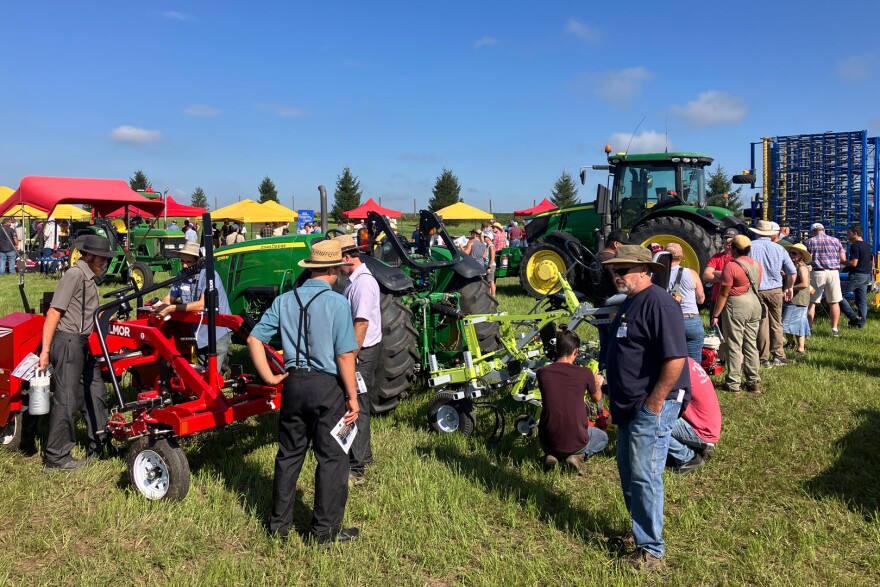On a hot August day in central Iowa, a few hundred farmers from across the Midwest gathered in demonstration fields at the Iowa State University Horticulture Research Station.
Some pushed one- and two-wheel weeding tools between rows of brassica. Downhill, an equipment dealer turned on a “flame weeder,” a propane-powered device that melts away any unwanted plants.
Others pulled multi-row tractor attachments with camera-guided systems and hydraulic adjustments through fields of recently-planted corn.
Bringing farmers together to see equipment in action – and even test it out themselves – is at the heart of the Midwest Mechanical Weed Control Field Day.
“One thing I love about this event, it brings together all types of farmers, different scales, different crops and different growing philosophies,” said Sam Oschwald Tilton, founder and lead organizer of the annual event.
Over the past eight years, the field day has rotated to different states. This was the first in-person event in Iowa.
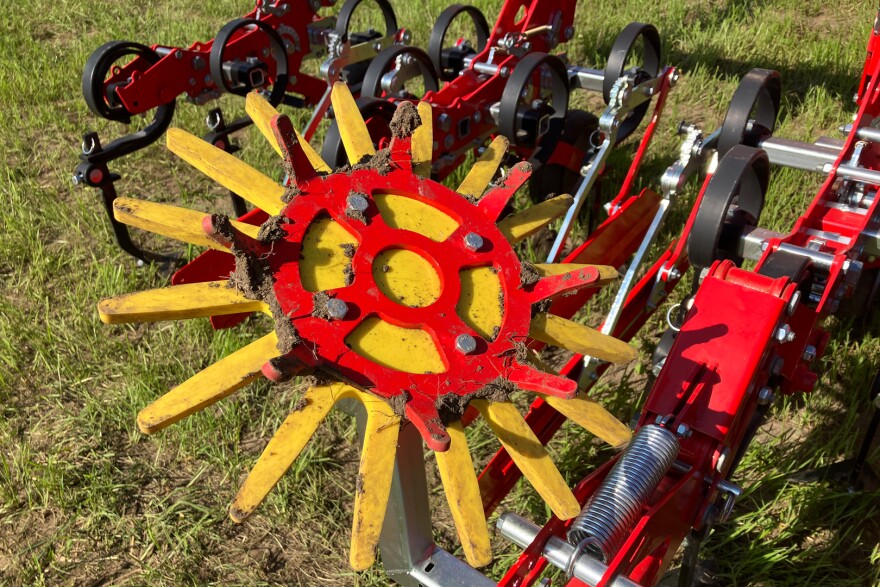
Oschwald Tilton estimated that half of the attendees use pesticides in some manner but are interested in reducing how much they apply or need solutions for herbicide-resistant weeds. The other half use organic methods. This includes corn and soybean farmers, but also many small- to mid-size vegetable growers who rely heavily on labor.
“For those farmers that don’t use herbicides, it’s harder and harder for them to pay people to hand-weed,” Oschwald Tilton said. “And the more they have to pay people, the more that expensive weeding tool starts to pencil out.”
Kate Edwards grows 150 varieties of 30 different types of vegetables at Wild Woods Farm in eastern Iowa. Holding her four-year-old daughter, she said mechanical weed control can help save time and make farming more efficient.
“As we all know, there [are] work-life balance issues with farming when you're farming really long days, and anything that can make your life a little bit easier to also grow your crop a little bit better, is going to be incredibly important,” Edwards said.
Edwards said she’s known about the Midwest Mechanical Weed Control Field Day for years, but it was too far of a drive in the middle of the growing season.
“A year ago, I heard a rumor that it was gonna be in Iowa. I was so excited,” Edwards said. “It's the event of the summer for us.”
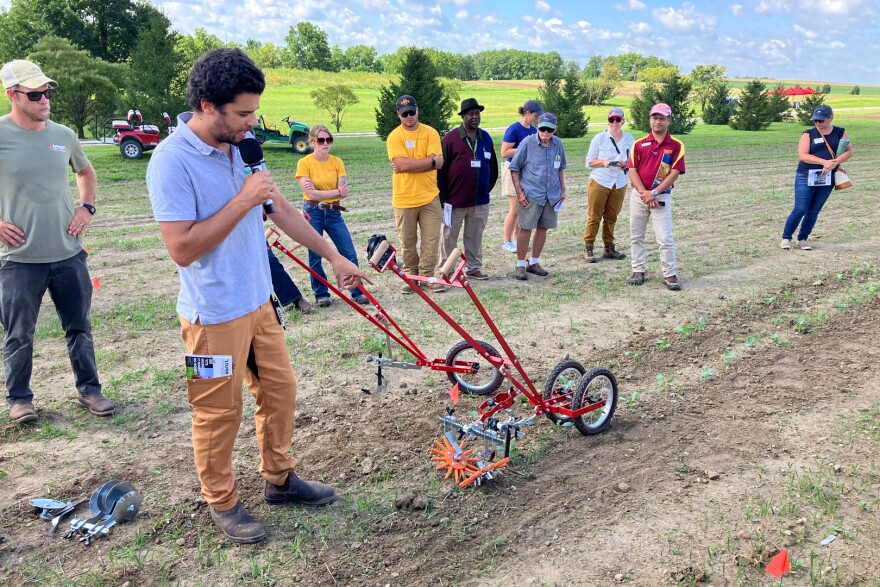
Oschwald Tilton said the event grew out of on-farm research during graduate school at Michigan State University.
“My professor, Dan Brainard, and I were learning a lot about European weeding tools,” he said. “At the time, they were cutting edge and just coming into the U.S.”
They organized the first Midwest Mechanical Weed Control Field Day in Michigan in 2017 to help farmers learn about new options. Oschwald Tilton said it was meant to be a one-off event, but some of the attendees asked if it could continue.
Since the first field day, Oschwald Tilton said the mechanical weed sector has grown and expanded. More U.S. companies import tools from Europe. Some adapt them to meet the needs of U.S. farmers, and others, like Ohio-based Unverferth Manufacturing, make their own.

The Unverferth Perfecta cultivator attaches to a four-wheel tractor. It’s designed to break up weeds and prepare the soil for planting.
During an education session, T.D. Holub with Garden Oasis Farm in northeast Iowa talked about his experience using Perfecta over the past decade. He said it’s less destructive to the soil compared to a tiller, which he no longer uses.
“The big thing about a tiller is, it’s really chopping up the soil and making it almost like fine dust. Whereas the Perfecta is leaving more of the soil in the ground,” Holub said. “There’s more texture so when a heavy rain hits it, we’re not getting that compaction.”
Edwards attended the session and said she plans on buying the same cultivator this year. Beyond the field demonstrations, Edwards said there’s value in connecting with other growers, whether they focus on market vegetables or corn and soybeans.
“A lot of these people who are organic row crop growers hold generations of knowledge,” Edwards said. “As a vegetable farmer, I feel just really lucky to have access to some of that information. So, this is an incredible event.”
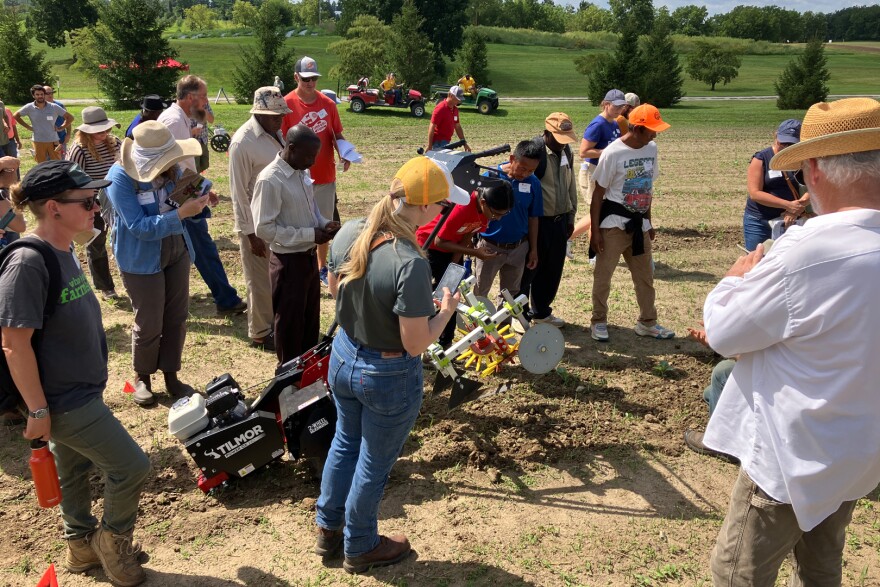
John Hendrickson owns Small Farm Works, a small-scale farm equipment dealership based in Wisconsin. He said he’s one of the few vendors who have attended the annual field day since the beginning.
“There’s literally very few opportunities that growers have to not just look at a catalog or look at a website, but actually see the tools in person, see how they’re adjusted, talk to the people that make them face-to-face, and that’s invaluable,” Hendrickson said.
Hendrickson’s online business sells hand-held Japanese tools, which he discovered while living abroad with his family. Some of these have long, thin wires that gently pull out weeds around rows of vegetables. Another is a paper-pot transplanting system. It feeds a chain of seedlings from a tray into the soil.
“It enables growers to put plants in the ground in a much more efficient, ergonomic way,” he said.
He said his main customers are small-scale vegetable farmers who sell through farmers’ markets, community supported agriculture and restaurants. Typically, they’re growing on less than an acre to seven acres.
Ajay Nair, professor and chair of the department of horticulture at Iowa State University, said the line between large-scale commodity farmers and vegetable growers in Iowa is starting to blur.
“I see more larger scale growers are looking into ways of diversifying and taking maybe five acres out of their 500 acres or 1000 acres and dedicating it to specialty crops,” Nair said.
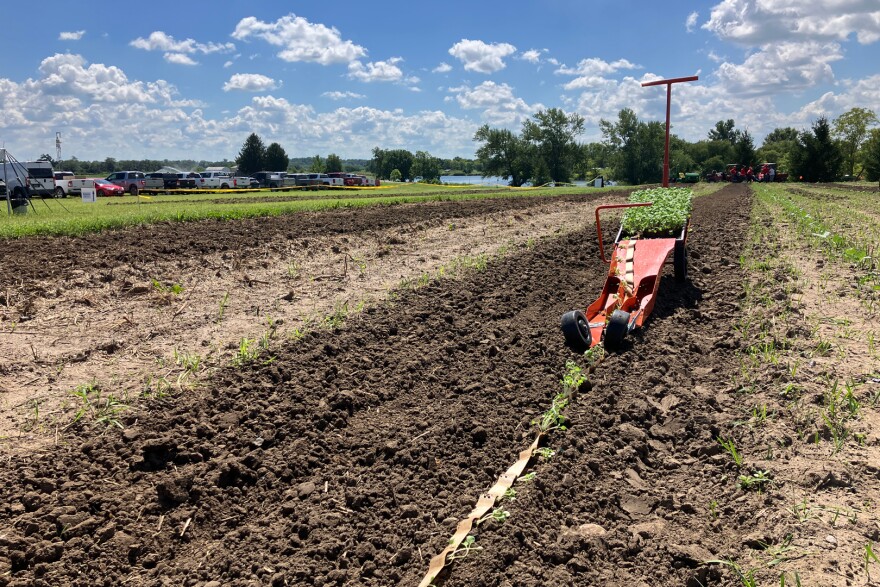
Many sell their specialty crops directly to consumers through farmers’ markets, community supported agriculture and farmstands. But he said some have contracts with food companies, like Bird’s Eye in Minnesota, to grow sweet corn and peas.
“We still import a lot of vegetables in the state,” Nair said. “If we can cut that import down by supporting our local growers, local farms, it's going to keep many jobs here and also stimulate the economy.”
Tools that save farmers time and cut down on labor costs could significantly help, he added.
This story was produced in partnership with Harvest Public Media, a collaboration of public media newsrooms in the Midwest and Great Plains. It reports on food systems, agriculture and rural issues.

